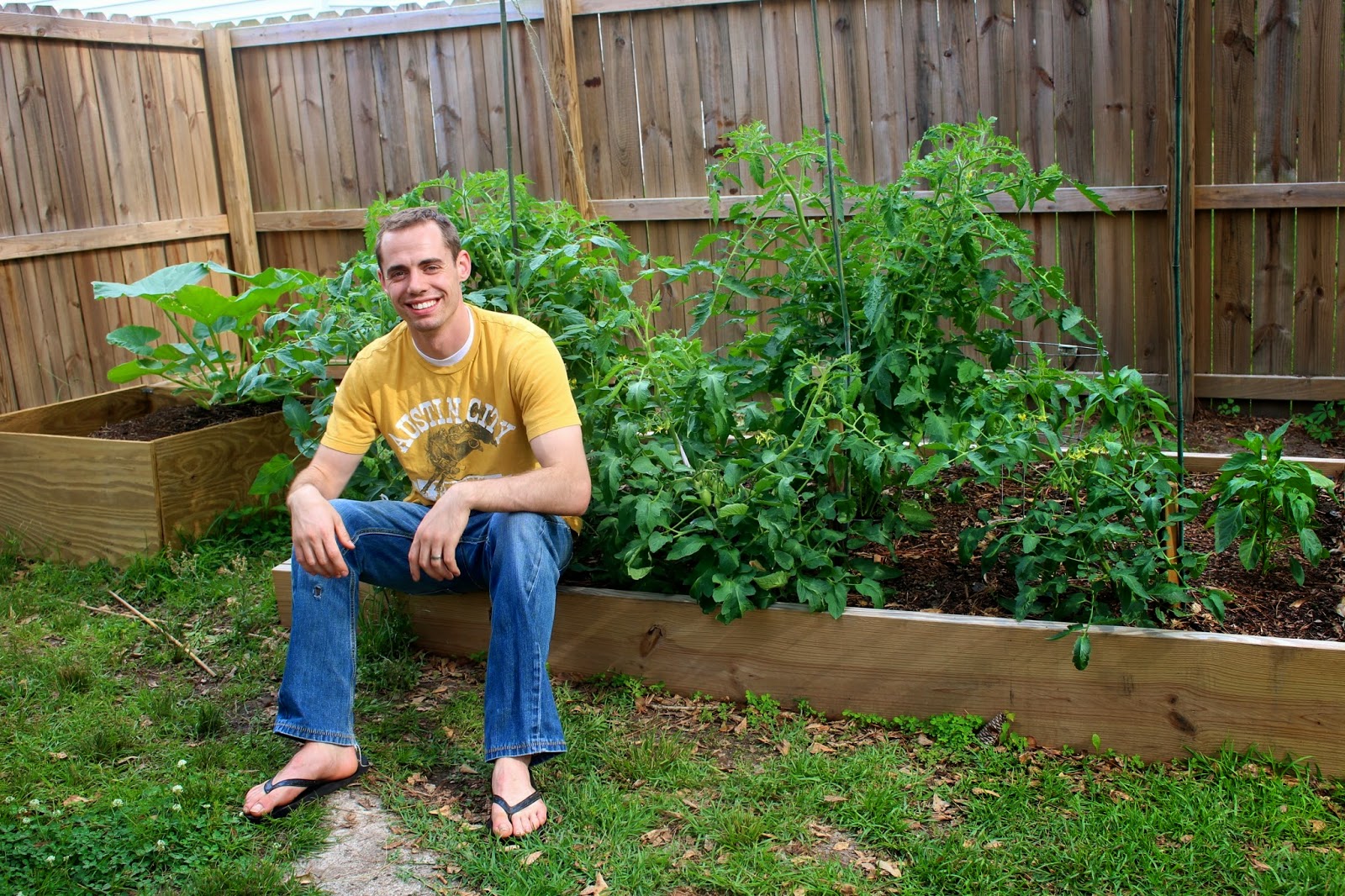Well, we're about a week behind in blogging. We took these pictures last week and it seems like some of these plants are twice as big today!
The tomatoes are in bloom and, as you can see, the sauce tomatoes are already forming:
Scott is training and trellising the tomatoes. The indeterminate tomatoes are often trained into long vines vs. letting them bush out. In a greenhouse you're only going to let it grow into one tall vine using a long cord. This allows use to grow more in a small space. It also forces more of the energy into growing more fruit instead of more leaves. It's amazing how differently we are growing our tomatoes compared to our first garden two years ago. We used to let nature dictate how many tomatoes would grow and how big they were. We ended up with a ton of very small fruits which made scalding and removal of the peel more difficult for canning purposes.
Because outside we don't have the super tall roof of the greenhouse to support one single tall vine, Scott let it have two vines. Below you can see Scott left one sucker to grow which is the first sucker below the first flower cluster. This is the second main vine branching from the first.

The pruning strategy with peppers is the opposite of the tomatoes. Instead of encouraging them to be tall and viney, you want them to be thick and bushy. Many people wait to let the plant grow up in a single stalk until it starts making flowers and then hack 80% of the plant off so that it grows back into a multi-stemmed plant. Scott chose instead to prune it as it grew. When the pepper plants were very small each time the plant formed a new node he would pinch off the meristem so when the plant was small it would branch out and turn one branch into two at each node as it grew. This made the plant more bushy. The reason he did more gradual pruning rather than waiting for it to get big and hacking it off was to get the same branching effect while removing less of the plant as he went. (He doesn't know if this is a more efficient way of doing it. He just thought he would try it.) We can't wait to taste these 'Carmen' Peppers!

Last week our 'Rouge Vif' Pumpkin was just barely starting to stretch it's legs.
Here is a picture of the some of the new leaves and tendrils.
How adorable is that?!
The 'Costata Romanesco' Zucchini is just enormous and has produced a lot of great tasting fruit. We have really enjoyed slicing it up and sauteeing it with other veggies for breakfast. The fruits are rather prickly which is something I wouldn't expect of a zucchini. They don't taste prickly so I guess it's a forgivable characteristic.
The sunchokes in the background were over five feet tall last Sunday and have reached 6 feet this week. They are starting to produce flowers. Scott removes these to force the energy back into the tubers which is the edible part of the plant.
What's growing in your garden?
-Scott and Stephanie























